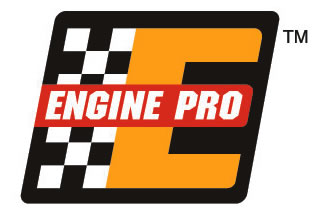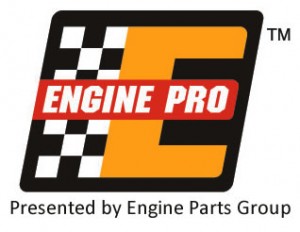In our shop, we don’t have a dyno or engine test stand. We work on a variety of engines from Chevys to Internationals to Continentals, so no engine start stand would suit everything we do. In an effort to find oil leaks, we have started to “smoke” our engines. In our store one of our outside sales guys was demonstrating a smoke machine commonly used in auto body shops to find a leak in trunks, sunroofs or windows. They are also used in exhaust repair to find any small leaks in a pipe or joint. We borrowed it to test an engine we had just finished assembling. We plug up the holes in the valve covers with plastic plugs or masking tape and then we pump smoke in through the dipstick tube. We are now able to find any potential leak, and test all of our complete builds. Looking for those leaks can be a big job. We can easily find the small ones that just sweat enough to make a mess and attract dirt. Our smoke machine use cooking oil to make the smoke, which I would recommend over other machines on the market that take a special solution you would have to order and maybe ship in. Cooking oil is available at the local grocery store.
Brad Luck
Weaver Auto Parts
Sauk City,WI
Making Impact on Head Disassembly
Here is a fast way to disassemble cylinder heads. Take a 1/2” impact driver (the type that you twist and hit with a hammer) and place an impact socket that is just a little smaller than your valve retainer onto the impact driver. Next place your cylinder head on your workbench or V head stands. Next, place the impact driver socket over the retainer, push down on the retainer, hit the impact driver with a good size hammer and then slowly lift up and pull the separated keepers with a pen magnet. The energy from the spring in the impact driver helps to separate the keepers from the retainers and valves, and it also helps to stop the keepers from flying away by keeping the socket on top of the retainer.
Dave Matton
D and D auto Machine
Bloomington, MN
Stud Installation Secret
We all know head studs and main studs give better clamping force for our fasteners. Did you know that bottoming out the stud is a bad thing and the stud should never hit the bottom of the hole? Studs should never be torqued into place and should only be snugged down. When bottoming the stud, you can and will mushroom the bottom of the stud. You can prevent this by placing a small ball bearing in the bottom of the threaded bore. User beware though, when removing the stud the small ball bearing can go into other places in the engine. Once studs have been installed we always hope there is no other reason to remove heads or mains unless we are upgrading to more power. Your normal consumer may not know to keep a look out for small bearings if used, so always make notes to your buyer. Many engine builders already make it a habit to look for things like this among other small tricks to make building easier.
Roy A. Maloney
Engine & Performance Warehouse
Houston, TX
How To Identify A Cracked Wet Liner Before Installation
With all the heavy-duty diesel engines out there with wet liners, nothing can be more aggravating than a second teardown due to coolant in a cylinder from a cracked liner.
There is a good chance the liner was cracked before you ever touched it. As thick as they are, they can be cracked at the factory when a pallet on a forklift gets slammed into another pallet or wall, etc.
When you receive them, they look fine so you install them and at this point, check the liner ID for out of round at the top, middle, and bottom. If more than .002” out of round, the liner could be cracked at that area. Cracks of this type are so fine you cannot see them with the naked eye until after the engine has run and gets carbon in it. Most of the time cracked liners are more than .008” out of round, making them easy to find. By checking the liner ID after installation, it may also tell you if there is a rolled O-ring or distorted parent bore in the block, etc. You can measure the OD of the liner for “out of round” before installation if so desired.
Kevin Borkowski
Tom’s Agri-Diesel, Inc
Harlan, IA
The Secret To Effective Sales
Sales is nothing more than a communication between your shop, which sells parts and labor, and a customer who wants to buy parts and labor. This communication can take place over the phone, at your counter or on the web. There are lots of specific tips that will improve a customer’s first impression of your shop, like greeting them enthusiastically, making eye contact, and using a firm handshake, but the secret to sales success can be boiled down to one philosophy; be interested in your customer.
If you are truly interested in your customer, treat them like family. That interest will drive your conduct and payoff in more sales and bigger profits for your shop.
Steve Rich
Sterling Bearing, Inc.
Kansas City, MO
Honda 1.7 Cylinder Head Heat Caution
Some issues to be aware of when checking out late model 1.7L heads like the D17A1. These heads have the exhaust ports come together inside the head and merge to one larger port. I have found that they seem to retain more heat in the cylinder head, which causes these heads to warp easily. They seem to warp the most on the exhaust side of the deck surface. These heads should be pressure tested. We have found cracks inside the exhaust port on heads that did not get severely overheated. It seems this new design exposes the head casting to much more heat.
Jeffrey Myers
MAR Automotive Inc
Philadelphia, PA















